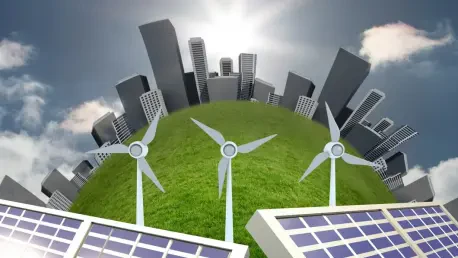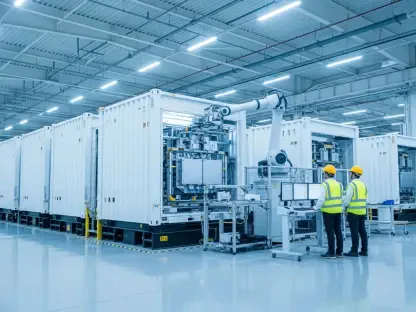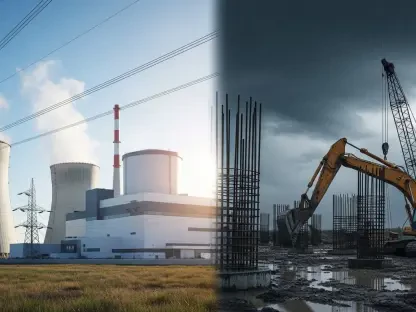In the ever-evolving landscape of renewable energy, a significant challenge has emerged for developers navigating policy shifts and operational bottlenecks, particularly in regions heavily reliant on federal land for project siting. NV Energy, a Las Vegas-based utility under Berkshire Hathaway Energy, has taken a proactive step by requesting approval from the Federal Energy Regulatory Commission (FERC) to allow wind and solar developers to exit its interconnection queue without financial penalties. This move addresses the mounting uncertainties caused by recent federal policy changes, which have disrupted the financial and logistical viability of numerous projects. By proposing a penalty-free withdrawal window, the utility aims to clear its congested queue of unfeasible initiatives, paving the way for more viable projects to advance. This development highlights the broader struggle within the renewable energy sector to adapt to regulatory changes while striving to meet ambitious clean energy goals in states like Nevada.
Policy Shifts Impacting Renewable Energy Development
Recent federal policy adjustments have created a ripple effect across the renewable energy sector, particularly affecting developers in Nevada, where a vast portion of land falls under federal jurisdiction. A significant change includes the phaseout of clean energy tax credits through a recent spending bill, which has undermined the economic foundation of many planned solar and wind projects. Additionally, a Department of the Interior (DOI) memo now requires high-level personal review for decisions related to renewable projects on federal lands managed by the Bureau of Land Management (BLM), which oversees 67% of Nevada’s territory. This bureaucratic hurdle has effectively stalled progress, raising concerns among state officials about meeting the growing energy demands from industries such as mining and data centers. The combined impact of reduced financial incentives and approval delays has left many developers questioning the feasibility of their queued projects, prompting NV Energy to seek innovative solutions to manage its interconnection process more effectively.
The broader implications of these policy shifts extend beyond individual projects to the overall pace of renewable energy deployment in the region. Nevada Governor Joe Lombardo has publicly expressed apprehension over the potential setbacks in achieving state energy goals, emphasizing the critical role of timely project approvals in supporting economic growth. For developers, the loss of tax credits means reevaluating budgets and seeking alternative funding mechanisms, while the DOI’s stringent review process adds layers of uncertainty to project timelines. NV Energy’s interconnection queue, dominated by nearly 80% solar and wind projects, reflects this strain, with many initiatives now at risk of stalling indefinitely. The utility’s response to these challenges through its FERC request underscores a pressing need to adapt operational frameworks to align with the current regulatory environment, ensuring that resources are directed toward projects with a higher likelihood of success amidst these federal constraints.
NV Energy’s Proposed Solution to Queue Congestion
To address the growing backlog in its interconnection queue, NV Energy has put forward a proposal to FERC for a one-time, 60-day window during which developers can withdraw from the queue or terminate existing agreements without facing financial penalties. As of the latest data, the utility’s queue comprises 49 projects totaling approximately 17,610 MW, with a significant share involving solar and battery storage hybrids, alongside 27 executed agreements for projects yet to come online, representing about 5,735 MW. The penalty-free exit option, coupled with a rapid return of commercial deposits, aims to encourage developers to abandon projects that have become unviable due to recent policy changes. This initiative is designed to streamline the interconnection process by reducing the number of stalled projects, thereby minimizing delays and cost uncertainties for developers with more feasible plans ready to move forward.
Support for NV Energy’s proposal extends beyond the utility itself, with industry groups like the Solar Energy Industries Association (SEIA) and the Interwest Energy Alliance endorsing the waiver through a joint filing with FERC. These organizations argue that allowing penalty-free withdrawals will expedite the removal of uncertain projects, cutting down on the need for repeated restudies that often burden remaining developers with additional costs and delays. NV Energy emphasizes that clearing the queue will help avoid disputes and provide clarity for developers who have secured financing or offtake agreements, enabling them to focus on projects that align with state renewable standards or are unaffected by federal land restrictions. This strategic move reflects a pragmatic approach to balancing operational efficiency with the overarching goal of supporting renewable energy growth, particularly in a state where federal policy constraints have significantly altered the development landscape.
Future Pathways for Renewable Energy in Nevada
Looking ahead, NV Energy’s request to FERC marks a pivotal moment in addressing the immediate operational challenges faced by the renewable energy sector in Nevada. The utility’s effort to implement a penalty-free withdrawal window is seen as a necessary step to declutter its interconnection queue, ensuring that resources and attention can be redirected toward projects with stronger prospects for completion. This initiative not only tackles the backlog but also sets a precedent for how utilities might adapt to sudden policy shifts that disrupt long-term planning. By offering developers the flexibility to reassess their commitments without financial repercussions, NV Energy paves the way for a more agile response to regulatory uncertainties.
Beyond the immediate relief provided by the waiver, the situation underscores the need for broader collaboration between utilities, developers, and policymakers to create a more resilient framework for renewable energy advancement. Stakeholders are encouraged to explore alternative siting options outside federal land constraints and to advocate for streamlined approval processes that can mitigate future bottlenecks. Additionally, the rapid return of commercial deposits offers developers a chance to reinvest in viable projects, potentially accelerating the state’s progress toward clean energy targets. The response to NV Energy’s proposal highlights a collective recognition of the importance of adaptability in sustaining momentum for renewable energy, ensuring that Nevada can continue to meet its energy demands despite evolving federal policies.









